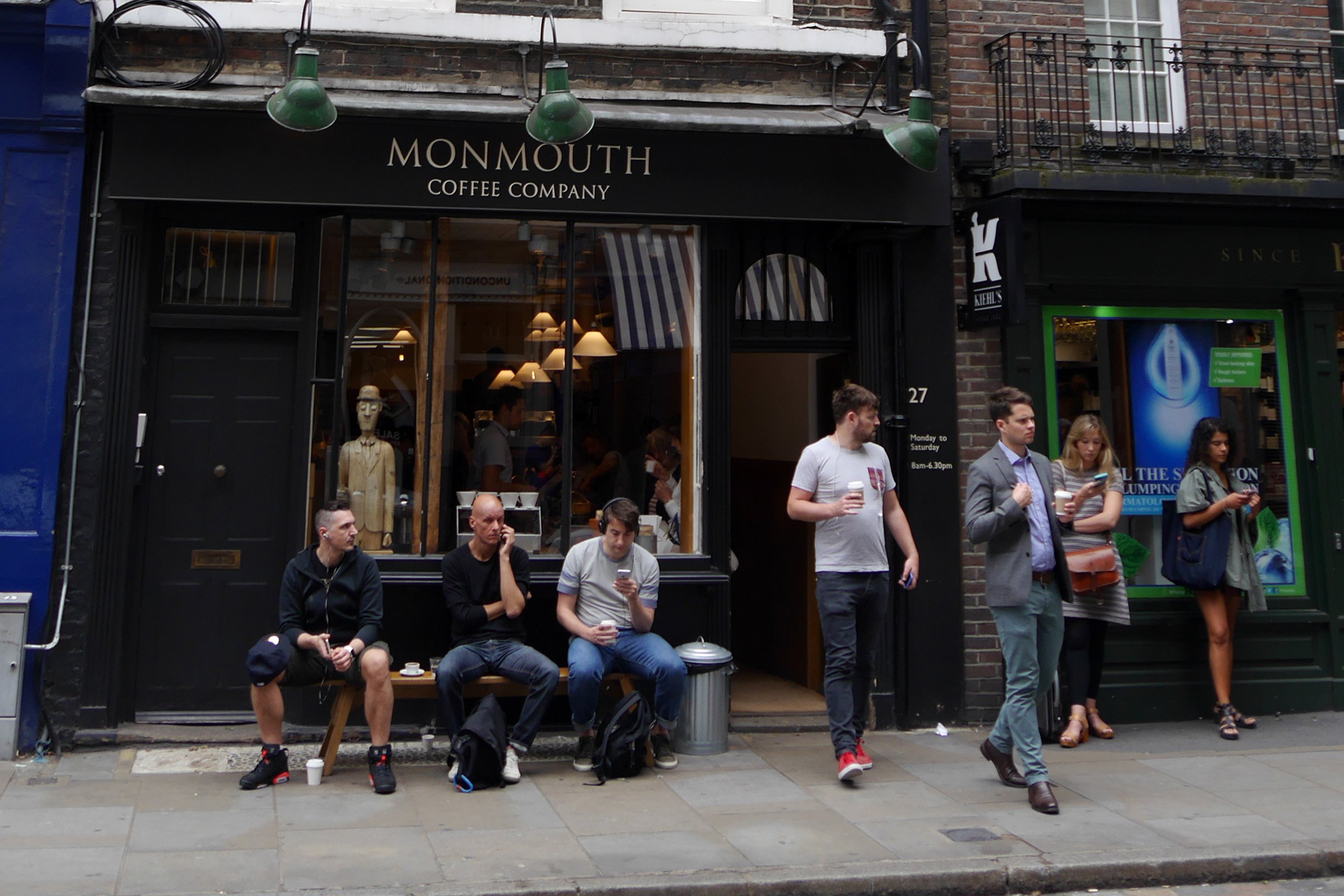
In the final article of this mini-series we share reflections from people that have scaled specialty coffee chains, plus add some ideas of our own.
Get the latest Audio Articles by subscribing wherever you get podcasts
In the end, it just wasn’t enough. The Gentlemen Baristas’ strategy didn’t enable them to offer a more attractive proposition. Their product range was very similar to their competitors. And with customers unwilling to pay a premium or the business achieving lower costs, it’s almost inevitable that the business failed to operate profitably.
And, like other specialty chains, they weren’t defeated by a single competitor. Instead, they were conquered by a motley crew of independent coffee shops adjacent to their stores. Rather than seeing their situation as haphazard, the purpose of this series has been to appreciate the market forces within which specialty chains operate. From this perspective, The Gentlemen Baristas being forced into administration was entirely predictable.
This isn’t a reflection of the vast majority of people who work in the business, especially those in customer-facing roles. The Gentlemen Baristas story is part of a larger narrative. Over the past decade the United Kingdom has witnessed the collapse or retrenchment of multiple specialty coffee businesses. While each company has a unique tale, in the end they succumbed to the same market forces.
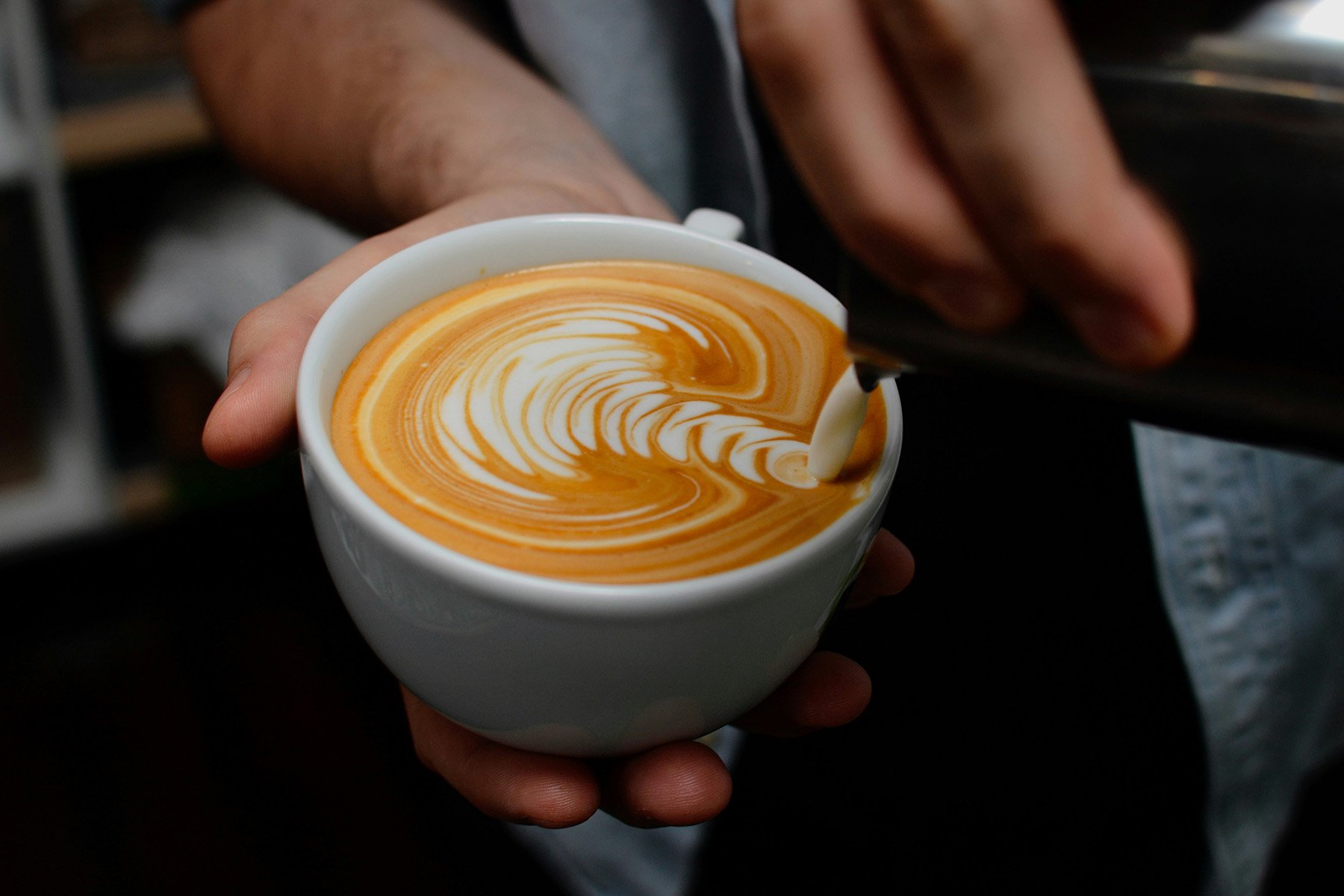
In the first two articles of this mini-series, we unpacked the challenges faced by multi-site specialty coffee businesses. The analysis provides little reason to think that the current cohort of specialty coffee chains will fare better. In fact, it’s predictions are coming to pass. To date, none of the specialty chains have developed a proposition that achieves higher customer spend with reduced operating costs.
Without a structural advantage over their competitors, and like The Gentlemen Baristas and others before them, their strategy is to keep cup prices as low as they dare and hope that sales volumes outpace operational costs. In the meantime, these companies are selling cups of coffee below fractional cost – that is, at a financial loss. Investors are currently subsidising consumers’ cups of coffee. The situation is, of course, unsustainable.
So, what would a good strategy look like? And under what circumstances might a multi-site coffee business have an improved chance of success? We don’t pretend to have all the answers, so in this final article we share reflections from people that have worked to scale specialty coffee chains plus add some ideas of our own.
Retain operational agility with business cycles
Being bigger is a double-edged sword. Increased size provides greater operational resources. However, with more people involved in making and implementing decisions, the necessity to coordinate action can reduce agility.
Small coffee shops use their comparative agility to attract customers with products such as rotating guest coffees, seasonal bakes, local events and regularly changing menus. When the business is small, a decision can be made and implemented with a quorum of just one or two people. It’s an everyday occurrence for owner-managers to make a decision one day and implement it the next.
Taking food as an example, once the business has grown, menus are standardised across multiple sites. Menu changes now require sign off from multiple internal functions including product, production, finance and operations. If approved, internal infrastructure is required to update point of sale, circulate internal communications and develop any marketing campaigns. In combination, these moving parts contribute to slower decision-making and erect a higher threshold for worthwhile change. And with longer lead-times, there’s an increased risk that the business will become either reactive or faddish, flitting from idea-to-idea without fully implementing plans that actually enhance profitability. In an ideal world, a specialty chain would retain sufficient agility to compete with independents as well as benefitting from its superior operational resources.
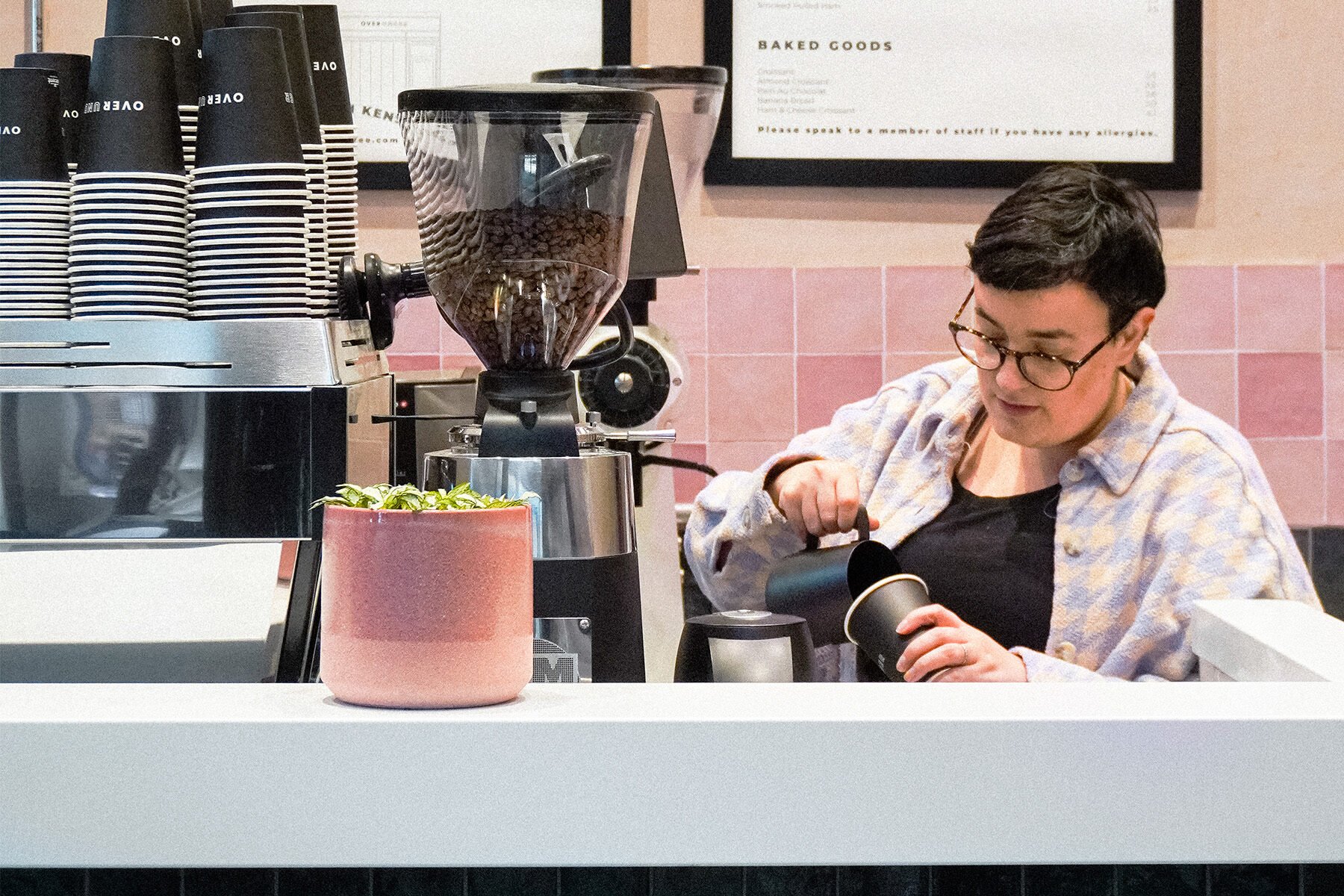
Functional organisations coordinate action around cycles. Some cycles are annual, such as finance, and others, such as refurbishment, might even be every couple of years. But most coordinating cycles are bi-annual (say espresso blends or espresso machine servicing), quarterly (training updates) or monthly (menu changes). At the other end of the spectrum, some cycles (such as rosters and trading targets) are as short as one week. With functions across the business committing to goals synchronised on these cycles, it’s easier to align work, make incremental improvement and achieve progress. Establishing cycles and implementing goals across the company is a critical management task for the coffee entrepreneur – and an example of a task that is best coordinated at the centre.
Maintaining a customer-focused culture
As more operational roles are added to headquarters, the business’s focus increasingly moves from the frontline to the back office. The alteration is partially justified, but attention can swing too far and the resultant power shift demands attention.
There are a number of reasons why too much time, energy and resource might be given to the centre. As discussed, coordinating actions between functions can be tricky, in fact trickier than any one function actually implementing the work. With an increased focus on coordination at headquarters, the priorities of the shops are more easily overlooked.
More concerningly, as decision-making becomes increasingly cumbersome, people at the centre justify their role by arguing they are positioned to make better quality decisions than the stores. If this narrative takes hold, power is further centralised at headquarters and removed from the shop floor.
Power grabs demoralise baristas and seldom work in practice. Quiz a successful shop manager from a medium-sized coffee business and they’ll readily share how their day-to-day work involves circumventing company processes for the benefit of their team and customers. Coffee shop chains are filled with good people battling the system to get things done.
Instead, we suggest specialty coffee chains adopt a decentralised decision-making model. Decisions should be made as close to the customer as practically possible. Functions should only be executed at a higher level if they can’t be performed closer to the frontline. Plus, in an even more radical step, we propose all headquarters roles actively serve the shops.
Inverting the pyramid
We are not aware of any specialty coffee chains that have employed a bottom-up company structure. Most coffee businesses are structured with senior management dictating downwards through layers of hierarchy to the front line. As a result, decisions and power are removed from the people closest to customers. It seems perverse that the people who generate the company’s revenue have little autonomy over how they go about their work.
There are alternative approaches. For example Timpson, a shoe repair and key cutting chain, has over 2,000 outlets across the United Kingdom and Ireland. The comparison is not arbitrary. This business, too, generates revenue from frontline staff performing manual tasks to serve customers in physical stores.
The key to their success has been the delegation of authority to customer-facing colleagues. Timpson explains, ’We believe the best way to give great customer service is to give freedom to the colleagues that serve customers.’
The company has just two rules to keep everybody focused: 1) look the part, and 2) put the money in the till. It’s that simple. Imagine how empowered shop managers, baristas and wait staff would be if management equipped them to present themselves as hospitality professionals responsible for maximising the shop’s revenue.
To achieve this, Timpson have implemented an ‘upside down’ management style, where headquarters and operations are responsible for serving the front line staff with products to sell, support services, training, shop development, payroll and finance. Everything across the organisation is focused on front line colleagues being able to achieve the first rule of ‘looking the part’ as they serve customers so that they can focus on the second rule to ‘put the money in the till’.
The Timpson example is noteworthy for two reasons. Compared to the specialty coffee chains, it enacts an profoundly different philosophy and benefits from having a much stronger commercial emphasis. Would it work in practice? There’s no doubt that it would require a clear vision, strong leadership and a cultural revolution, but it looks to be an approach worth investigating. After all, Timpson is likely to outlast the current wave of specialty coffee chains.
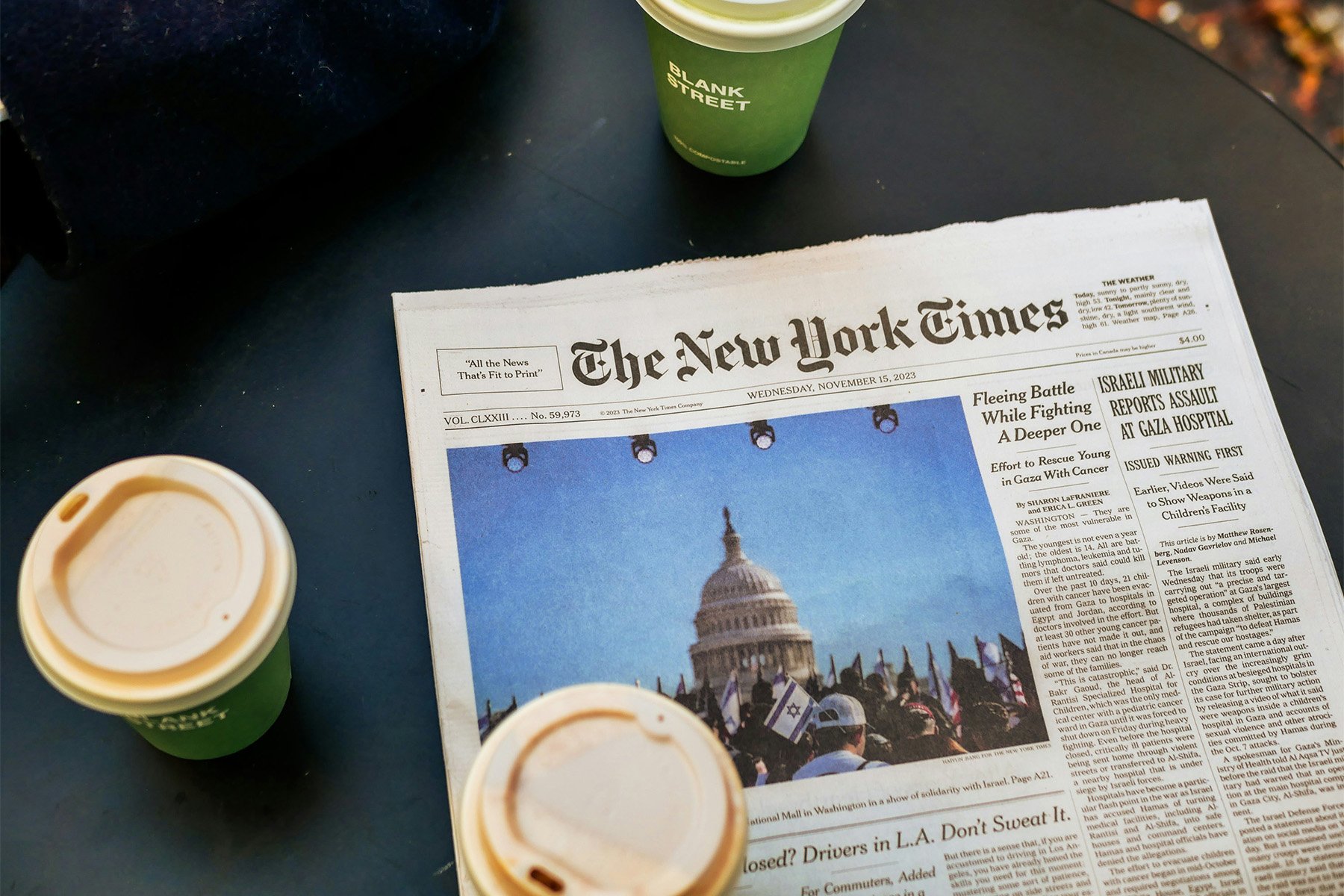
Performance management
People are motivated by a mixture of intrinsic and external rewards. Good entrepreneurs build company structures and culture to align each person’s behaviour with the company’s commercial interests.
If customer-facing staff are to be empowered to achieve commercial objectives, transparent performance measurement is required. This demands defining what success looks like. In many industries, managers set objectives, allocate resources and judge performance based on outputs such as progress, results or goals.
Performance measurement in coffee shops often isn’t straightforward. This is at least in part because many of the current performance measures focus on inputs, not outputs. Staff are expected to turn up on time, complete checklists, fulfil various processes and comply with regulations. Management’s assumption is that if these inputs are performed, the desired outputs of customer satisfaction and target revenue will be achieved. Of course, this is a massive assumption – and a recurring cause of failure.
A good shop team creates an attractive culture which draws additional customers, while less-good teams only respond to customer demand. There are, however, a mishmash of incentives at work. Baristas are seldom rewarded to behave in a manner that attracts customers and, in turn, makes work busier. There is often opacity over revenue, with many staff unaware of targets. And baristas are typically paid by the hour, and the worst baristas know it. These baristas do little more than they think is absolutely necessary, which is insufficient to build a thriving hospitality business.
These factors combine to create ambiguity and uncertainty in the workplace culture. Even strong baristas are often unsure how their skills and service blend to create satisfactory commercial performance. In contrast, owners and managers know who the best baristas are. They’re the people that understand the intrinsic reward of providing genuine service and value the camaraderie of working in a service-focused environment. To operate at scale, entrepreneurs must construct processes and measures that not only support great baristas but can motivate average people. Exceptional organisations can be identified by their ability to employ a typical person and empower them to accomplish amazing things.
Many entrepreneurs are fearful that greater commercial transparency will serve to demoralise the team, rather than encourage them. With a greater understanding of the business’s position, people may feel overwhelmed by the uphill battle ahead or even depart for jobs that are perceived to be more secure. As a result, management often seeks to encourage frontline teams by protecting them from the profit and loss. This makes money a taboo topic. So, when revenue growth is required, many owner-managers learn how to push their team forward without explicitly setting financial targets. It’s no accident that most successful coffee businesses are led by charismatic people who can deploy inspirational messages when it is necessary to motivate their team.
Many entrepreneurs further increase opacity when the business reaches the profitability chasm. Plus, their messaging increasingly diverges from the financial reality. In their way of thinking, it is essential that the team believes the business to be successful in order to enable the business to have a chance of success. This has led a number of coffee entrepreneurs to say deeply ironic and misleading things, a factor for failure we’ll return to shortly.
On performance management, we’ve spoken with dozens of managers to understand their approach and most of them concealed performance from their team. The managers we admire in other industries have well established performance indicators. This strikes us as a rich vein of opportunity for coffee entrepreneurs. If you are doing something interesting and effective, please let us know.
The changing regulatory and economic environment
There has been a succession of recent external shocks. Brexit has limited the supply of labour, increasing staff costs. Covid and the Russian invasion of Ukraine led to instability, price increases and inflation. In turn, central banks raised interest rates to return inflation to target, increasing the cost of money. And, the resultant economic tightening means consumers have less money to spend. The challenges in the United Kingdom’s business environment are now greater than any other moment in third wave history.
Coffee shop businesses have thrived in the period immediately following a downturn. Landlords have been willing to offer attractive rents. Finance starts to become more readily available and borrowing costs reduce. Increasingly confident consumers are ready to purchase small indulgences. And it is easier to recruit hospitality staff during periods of higher unemployment. It’s not a coincidence that specialty coffee took off in the United Kingdom following the 2008 global financial crisis.
Coffee shops don’t require a benign environment to succeed. But they do benefit from stability, growing consumer confidence and low inflation. There are signals that a more favourable environment could be in front of us. Inflation continues to fall and some costs may decrease. Commercial premises are relatively more available and even quite affordable. A change in UK government could lead to an updated agreement with the European Union increasing export opportunities and even the recruitment pool. And a spate of recent closures have arguably reduced competition on the high street.
Strong headwinds, however, remain. The demands of an aging population, stretched social services and high levels of government debt will lead to higher taxes. A prudent government will increase pension obligations so people are better provided for in retirement. An incoming Labour-led administration is likely to bolster workers’ rights and employers’ obligations. And there remain tricky, structural issues around reforming planning to facilitate housebuilding and transport infrastructure as well as broader economic reforms to boost the country’s ailing productivity and tackle the cost of living.
On balance, the regulatory and economic context is likely to improve. The coming five years are likely to be more favourable for coffee shop proprietors than the previous period. Specialty coffee chains may find the journey ahead a little easier. But there’s also likely to be many crosswinds and new headwinds over the coming decade. Coffee entrepreneurs will need to remain agile, innovative and forward-looking.
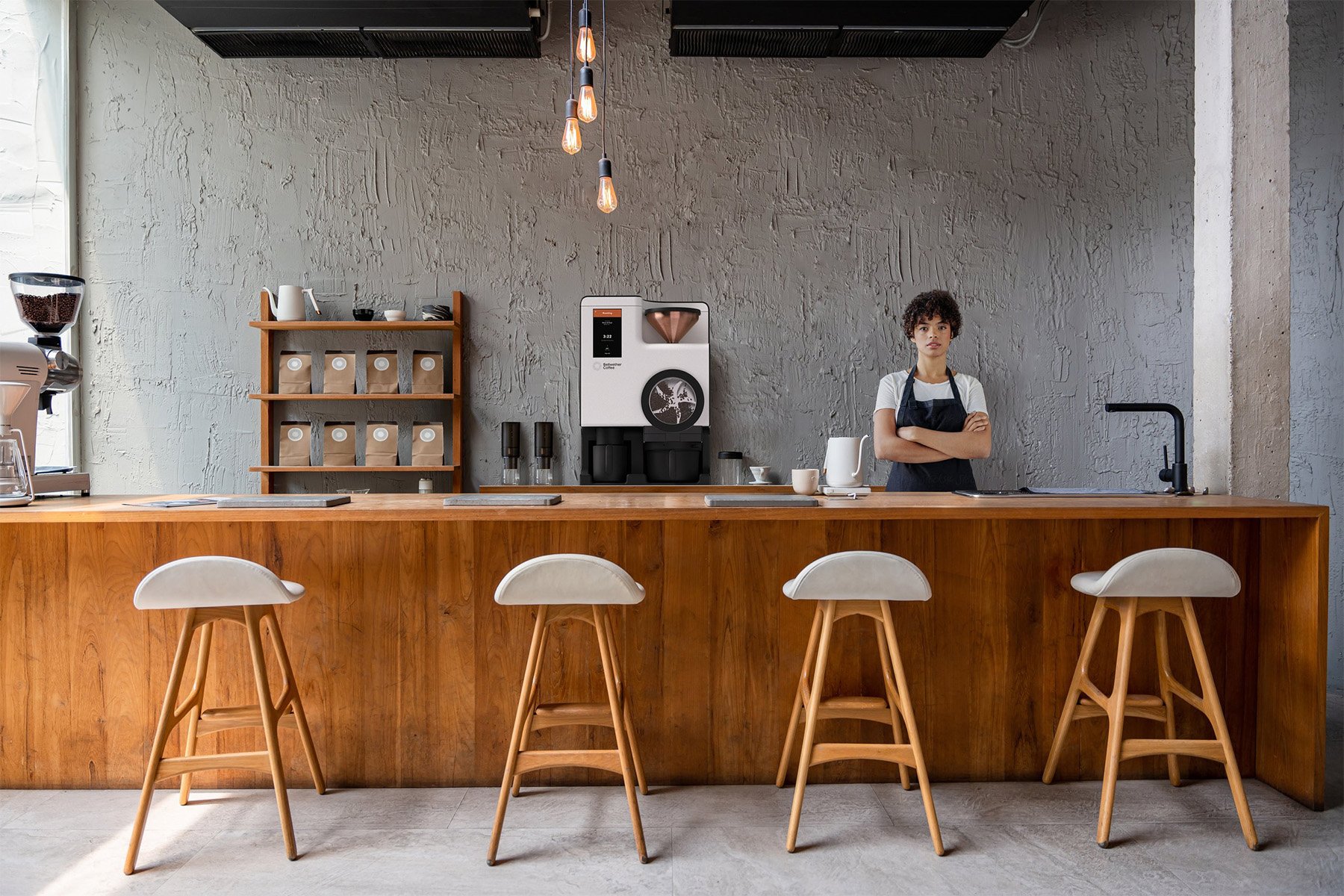
Technology drives change
Developments that would make specialty coffee chains significantly more profitable are most likely to come from technology.
For example, propositions that incorporate labour-saving technologies have the potential to boost profit margins, enhance speed of service and facilitate personalised customer service. A number of specialty chains are already implementing new coffee and ordering technologies and it seems likely that the roll out of these developments will only speed up.
There are obstacles for chains looking to capitalise on technological development, however. The most obvious being a chain would require a proprietary technology to gain an enduring advantage over competitors. At present, the overwhelming majority of coffee-related technologies are being democratised. They are getting both better and more affordable with each product development cycle. And thanks to an emerging ecosystem of startups and platforms, there’s now little technology a neighbourhood coffee shop can’t access that’s in a multinational chain. What was once miraculous, is now surprisingly mundane.
Even a tiny coffee shop can now roast their own coffee on site, take in-person and remote orders on a low-cost POS, make coffee at the push of a button, run a digital loyalty programme, and manage both staff and banking on a mobile phone. While it’s easy to see that further innovations will transform coffee shops, it’s more difficult to identify a technology that would provide a speciality chain with an enduring advantage.
New technologies do create opportunities for insurgents to leapfrog established businesses at critical moments. The strategic question is whether the insurgent can develop industry competencies before existing businesses adopt the new technology. For example, consider super-automatic coffee-making technologies where early adopters benefit from greater speed of service and lower staff costs over competitors who are using traditional machines. Conversely, the incumbents currently have a stronger product-market fit amongst consumers that value barista-prepared coffee. But as niches of customers become increasingly willing to accept push-button preparation, there is nothing to restrict more-and-more shops adopting super-automatic technology.
This is to demonstrate that early adopters don’t necessarily have an advantage. Jumping to adopt a new technology is not a sound strategy in and of itself. The enduring winners will be those that incorporate technologies to create compelling propositions, run good operations and have a sound business model.
Shops that sell more than coffee
Specialty chain entrepreneurs also need to carefully consider their wider proposition. Specialty coffee is already available in retail and hospitality formats, such as bakeries and restaurants. And some of these outlets are having good success. In fact, some sell more coffee than neighbouring coffee shops.
For the purposes of our analysis, we have been looking at coffee-led businesses, such as coffee shops. We define these businesses as generating at least 50% of revenue from cups of coffee. Cup sales for a typical UK coffee shop are often two-thirds to four-fifths, with the balance coming from food, other hot drinks, beans and merchandise.
By comparison, most of the bakery chains that play in the specialty space take 20 to 40% of revenue from cups of coffee. They simultaneously use specialty coffee as a complimentary product, a marketing strategy and an additional profit centre. Recently bakers have rapidly expanded their high street footprint and some are selling significant volumes of specialty coffee.
With so many other moving parts, the business models of these establishments are different. They operate with different staff cost, have different operational and logistics requirements and also have different profit margins. They should be subjected to analysis by a team that better understands foodservice as there are signs that they too are hitting the limits of their current format. Coffee entrepreneurs should appreciate that food is a serious business and it’s equally difficult to bolt on baking to your proposition as it is for a baker to compliment their cakes with quality coffee.
Coffee shops have had a stranglehold on specialty coffee because it requires specialist equipment and skilled staff. As technology further lowers the threshold for making quality coffee, we can expect it to become available across more channels. Specialty entrepreneurs need to increasingly consider how their business fits in the broader foodservice market.
Similarly, roasters with retail stores have a different business model. Their shops can be part coffee shop, part retail store and part brand activation centre. As well as selling cups of coffee it’s easier for them to generate profit from beans and experiences.
To date, there are few roaster-coffee-shop chains as many roasters are aware of issues that contribute to the profitably chasm. A number have supplied scaling coffee shop companies and have suffered from delayed payments and unpaid debt upon collapse. There have also been specialty coffee roasters that have embarked on retail openings and subsequently withdrawn having identified that it is easier for them to make money by focusing on direct-to-consumer and wholesale coffee sales. However, with the market becoming increasingly competitive, we expect more contenders as these businesses have potential to further increase revenue by moving customers around their suite of products and services.
Whatever the format, to be successful, a chain business that sells specialty coffee requires sticky customers. There must be something in the business’s proposition that compels a customer to walk past a perfectly adequate competitor to another branch of their chain. At present, differentiation is currently being achieved with adjacent products rather than the coffee itself.
A defensible strategy
Shop leases are typically five to fifteen years in duration. A strong business plan must outlive passing trends as well as provide enduring advantage over competitors, both potential and actual. An enduring focus of this mini-series has been to explore the factors that make formulating a defensible strategy difficult. But the converse is also true. Coffee entrepreneurs that do manage to create a defensible strategy can enjoy enduring success.
There are a small number of specialty coffee shop businesses that have achieved a sustainable edge over competitors. They each have business models that protect their market share and profitability. As well as employing some of the above ideas, they also share some common traits. None of them are archetypal coffee shop businesses. Their business models evolved through a combination of strategic planning and happenstance. All have historical quirks that give the present-day business a unique, and often peculiar, shape. Most of these businesses are now decades old. All fly beneath the radar, in part because they have owners who shy away from the spotlight. And, the industry typically gives these businesses little attention as each occupies a niche deemed too complex to be attractive to newer entrants.
Entrepreneurs are unable to easily replicate these businesses, which is why they are likely to endure. Entrepreneurs should take inspiration from other aspects. Instead of mimicking their propositions, coffee entrepreneurs should seek to construct some of these attributes within their own business to enhance their chances of enduring success.
International trends
Coffee entrepreneurs outside the United Kingdom may operate in a different context. Local market conditions and consumer preferences may make specialty coffee chains more viable elsewhere. After all, there are a variety of branded specialty chains operating in several regions, especially Southeast Asia. For years, we have been considering the likelihood of these international examples being a template for the United Kingdom or whether our home market is anomalous.
To delve further into our current thinking, while it’s true that we’ve been referring to United Kingdom examples, the reality is most have been based in London. There are, in fact, some interesting specialty chains operating in the regions. So, to be more specific, the market dynamics we explored in the second article are largely a function of mature, competitive markets. And London is one of the most competitive, and mature, specialty coffee markets in the world.
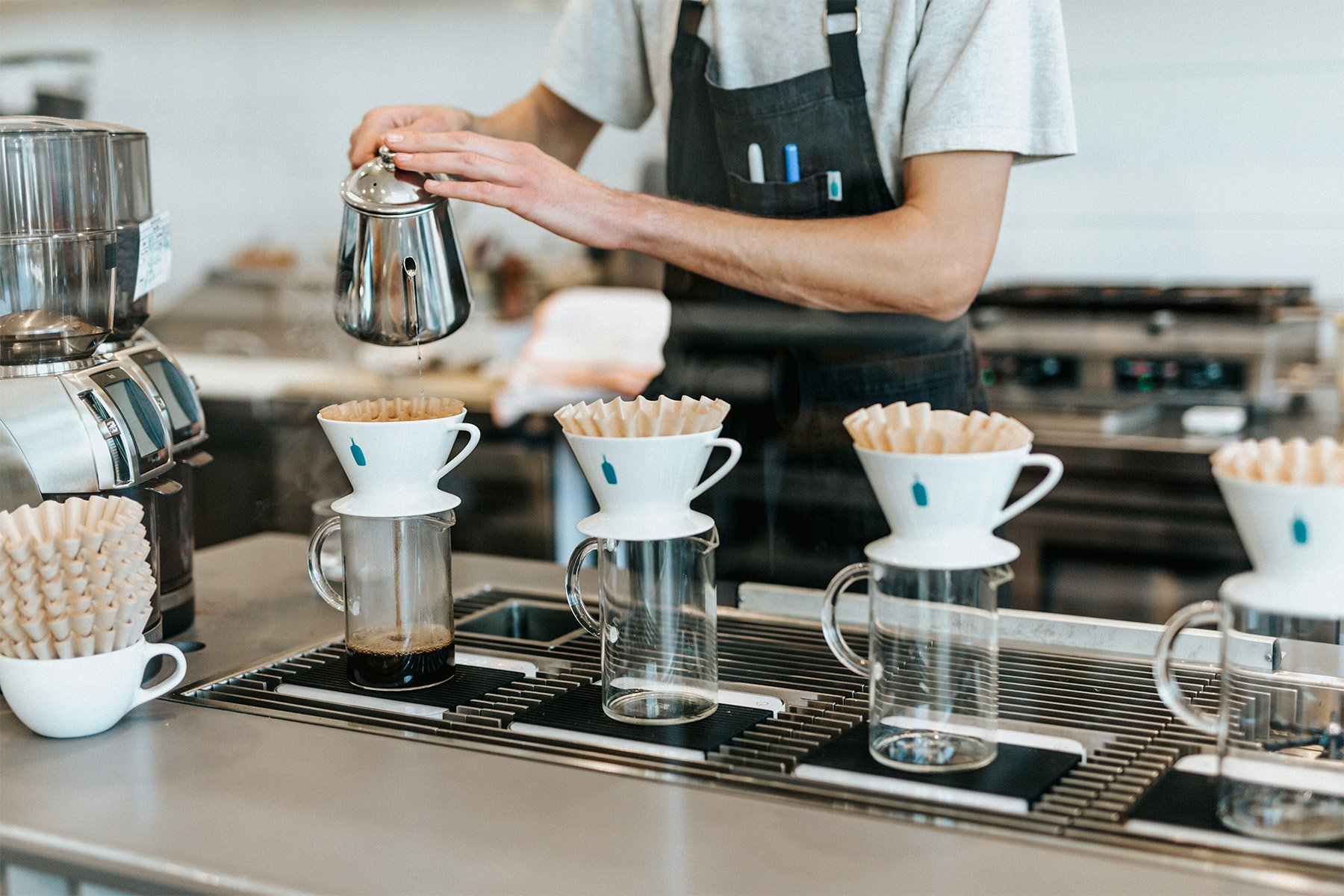
There was a moment around 2011 when a London specialty coffee chain seemed possible, and even likely. Reflecting on this with coffee entrepreneurs of the time highlighted several interesting aspects. Firstly, consumers were interested in specialty coffee but, because they lacked the skills to judge a shop, were more amenable to brands. Secondly, know-how and networks were important for key commercial activities such as sourcing equipment, coffee and products. Subsequently, new suppliers offered services that largely made these skills redundant, reducing the emerging chains’ comparative advantage. And finally, training was a core business competency because it was not yet possible to hire people with either barista or coffee skills. In this environment, the idea of a trustworthy brand built on a business with strong coffee knowledge and the capacity to train staff seemed well positioned to dominate the market.
However, within just several years the market had rapidly evolved and this confluence of factors had passed. This helps to explain why all the then dominant businesses are now defunct, retrenched or pivoted. Their story is an echo of maybe the most well-funded specialty coffee chain to date, Blue Bottle. Foundered in Oakland in the 2000s, the company took venture capital funding in 2012 and raised $120 million USD over several rounds. For a number of years it set the standard for store design, packaging, technology and service at scale. In 2017, Nestlé, a Swiss multinational food and drink conglomerate, acquired a majority stake. There are now around 25 sites in the United States and 75 in Asia. One hundred sites is a lacklustre outcome for such an investment and presumably well short of their original goals. Today, even with their corporate resource and international reach, it’s difficult to see anything they offer that’s not available at a local, independent coffee shop. They sell coffee from a range of origins; equipment from Fellow, Hario and Kinto; plus pods and some coffee-adjacent products.
In this light, it’s clear to us that coffee businesses have greater opportunity to scale before the market matures and competition becomes more intense. All the founders we spoke to agree that the United Kingdom’s regions are likely to become more competitive as they mature. International investors need to consider their local market, but in theory there’s nothing distinctive or unique about the United Kingdom. The global exception may be Asia, where consumers may continue to place a premium on brands for the foreseeable future.
The mermaid in the room
Specialty coffee has a complicated relationship with Starbucks. While much of the community disown the company, Starbucks identifies as a specialty chain. In practice, there’s points of collaboration and competition from crop to cup, including sourcing, supply chain logistics, retail space and consumers. Much of this analysis, as well as the specialty community, operates in their wake. They are simultaneously seen as an enemy, a populariser of coffee, a playbook and a competitor.
We’re going to classify them as suis generis because it’s noteworthy that underpinning many specialty coffee chain strategies is the premise of being better than Starbucks. Specifically, better coffee, better service, better design and better customers. As soon as an entrepreneur frames their objective in this way, it sounds feasible. Their logic is, now that people have become more educated and discerning about coffee, surely they crave something a bit better? Or the younger generations don’t want to visit stores with that aesthetic and music? And, if my small specialty coffee business can win over Starbucks’ customers, then we should do it at a larger scale!

However, this thinking is a recipe for disaster. Entrepreneurs and investors don’t need to hypothetically consider a ‘better Starbucks’, the company has already attempted a chain of specialty coffee stores called Starbucks Reserve. They aped the aesthetic of specialty, offered single origin coffees, adorned shops with V60s, used traditional espresso machines, planned a global rollout – and failed miserably. If Blue Bottle is the most well-funded specialty coffee chain to date, then Starbucks Reserve probably had the largest braintrust, deepest consumer insight and strongest operational capacity. And this still wasn’t enough to make it work. Today, Reserve Roasteries operate in just a handful of locations. Starbucks has also tested the premium-end of the market with an investment in the now-defunct bakery chain Princi.
Unlike much of specialty, Starbucks is not ideologically wedded to its proposition. It’s an agile, global, successful business that is continually reinventing itself and its menu. It’s proposition reflects the current equilibrium between mainstream consumer aspirations, operability and commercial viability. As the equilibrium moves, their proposition evolves to occupy that space. If Starbucks wished to occupy the niche specialty coffee chains are targeting, they could. The fact that they are foregoing it indicates that it is not a viable market for them.
Finally, the Starbucks business is facing headwinds. New competitors are entering the market, employees are unionising to win better working conditions, there’s been turnover of executive management, trends are sweeping the category more quickly and new serves are more complicated and time-consuming to make. These challenges are reflected in it’s stock price, which is down about 10% over the past 12 months. Howard Schultz, the company’s founder and former CEO, says the business is at an inflection point and needs to search its soul to ‘address Starbucks’ systemic issues and come back to the brand’s core values’.
Shultz isn’t worried about a killer competitor. Starbucks, like the specialty coffee chains we’ve been examining, is engaged in a location-by-location, person-by-person, visit-by-visit battle with other coffee shops. Most of their competitors are tiny. They may not have Starbucks’ global operations or command a price-earnings ratio of 25, but they do have something consumers value, ‘soul’. Across key mature markets, thousands of upstart coffee shops are creating meaningful connections with their customers, as well as serving great coffee.
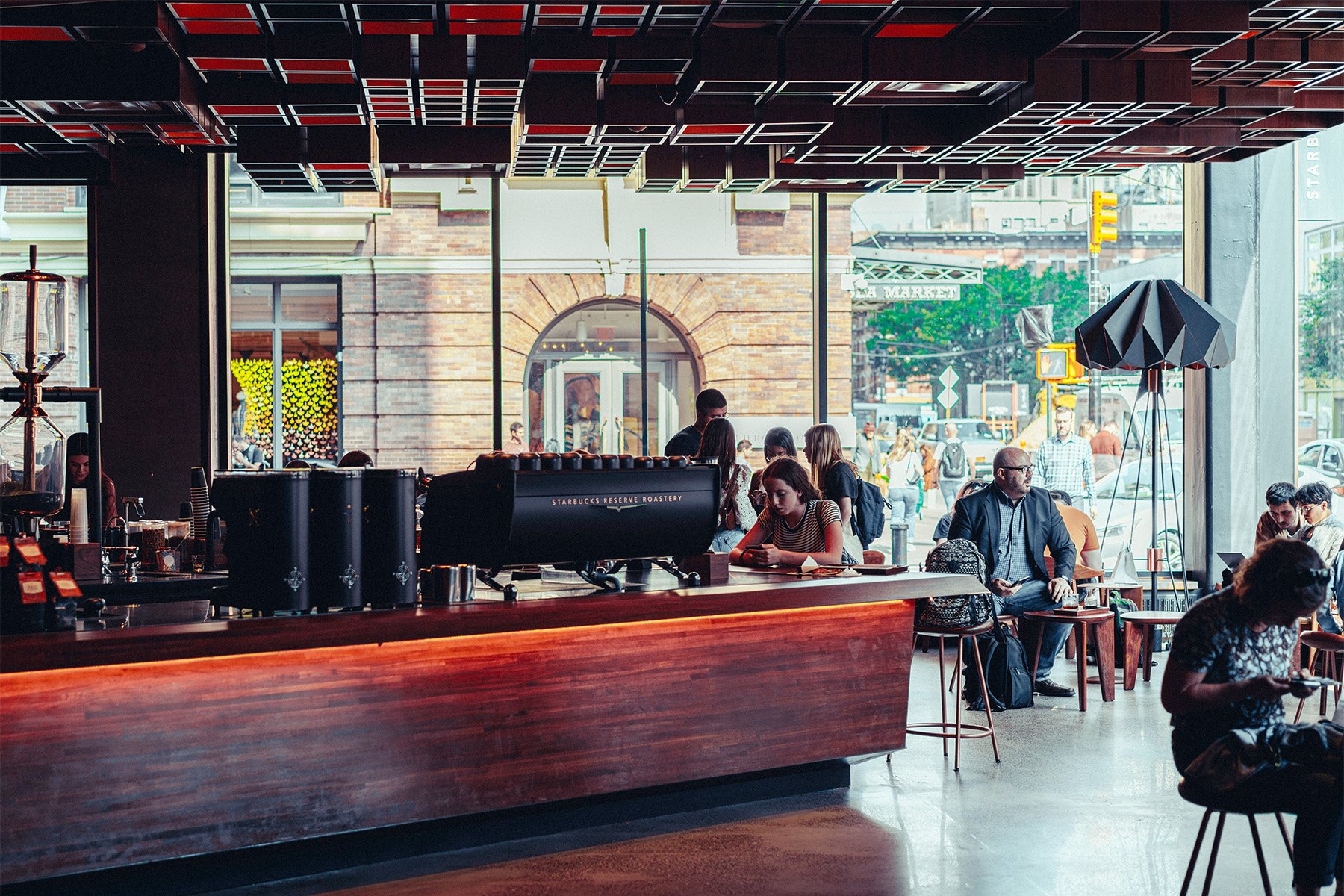
You don’t have to be a genius to appreciate that ‘soul’ isn’t a magical property, it’s what occurs when one person offers genuine hospitality to another. If you can’t identify its presence, you probably shouldn’t start a coffee business and you most definitely shouldn’t attempt to scale one. Of course, people who can’t read this trait are more likely to think scaling a specialty coffee business is a strong idea. Love or hate Starbucks, Shultz is a once-in-a-generation leader who, at least for a period of time, managed to successfully scale soul. Coffee entrepreneurs should be both inspired and in awe, it’s an incredible entrepreneurial achievement.
Our analysis of Starbucks offers several takeaways. Potential specialty coffee chains be warned, there is currently limited viable market space for a better Starbucks. And they too are battling similar market forces and trends to specialty coffee. Starbucks must continually strive to offer a proposition that is better than its competitors. And they are being too easily out-pitched by coffee shops that offer genuine hospitality.
There’s a good economic argument that the consumer-facing end of the supply chain actually leans towards fragmentation, rather than consolidation. Even if you might not go that far, one must concede that it would be virtually impossible to conceive of a specialty coffee shop chain if Starbucks had never existed. The very idea is built on mimicking their success.
Faking it until you make it is not a strategy
There’s an easy way to determine how a coffee business is performing, just ask the owner. When they are reflective, curious or share challenges you can safely assume things are going well enough, or at least according to plan. When they moan or share their stress, things are tough but they are surviving. But if they seek to persuade you that the business is performing well, often it’s not.
Appreciating that this is counterintuitive for many people, let’s unpack the rationale. When a good plan is working, it seldom feels amazing. A recipe for success has been identified and energy is now given to implementing the plan. This requires strong discipline and is a daily grind. In this mode, managers always look for improvement, but (since things are already working) changes should be both well-considered and rolled out incrementally. Additionally, when things are working well, many entrepreneurs do not wish to needlessly draw a competitors’ attention or inadvertently share their secret sauce. Recently chatting with a successful entrepreneur they told me, ‘The only place I want to be famous is with my bank manager’.
However, in situations where the business plan is barely held together and the finances are stretched to breaking, owners and managers have every incentive to simultaneously boast of their successes and be actively looking for game-changing developments. Internally if pep talks are critical for the business’s survival, many founders instinctively start deploying similar messages to industry, suppliers, media and customers. Things can quickly get out of hand. The media is littered with quotes from coffee business owners boasting of their rollout plans embarrassingly close to the company’s subsequent collapse. It’s instructive to compare their behaviour with Shultz’s frankness.
We appreciated that positive messaging for any business is essential. Being seen as a market leader can help to smooth relationships with suppliers, support recruitment and lower the cost of customer acquisition. But entrepreneurs have every incentive to carefully choose their case studies, selectively pick facts and even overstate their performance.
However, their narrative doesn’t help you ascertain their medium-term prospects. It’s always dangerous to accept a founder’s account without facts, corroboration and scrutiny. You already know founders and entrepreneurs believe in what they are doing. They’ve turned down other opportunities and are actively investing time and money. And additionally, it’s often a make or break situation for them where every challenge is potentially existential. In these circumstances, it’s far more prudent to largely ignore what coffee entrepreneurs say and instead watch what they do.
This is the essence of this short series. We propose that to better understand the specialty coffee market, it is necessary to take entrepreneurs narratives, amalgamate them and use business performance as a lens on the industry. This approach also allows us to see the types of specialty coffee shops are currently succeeding. And they are typically, local heroes.
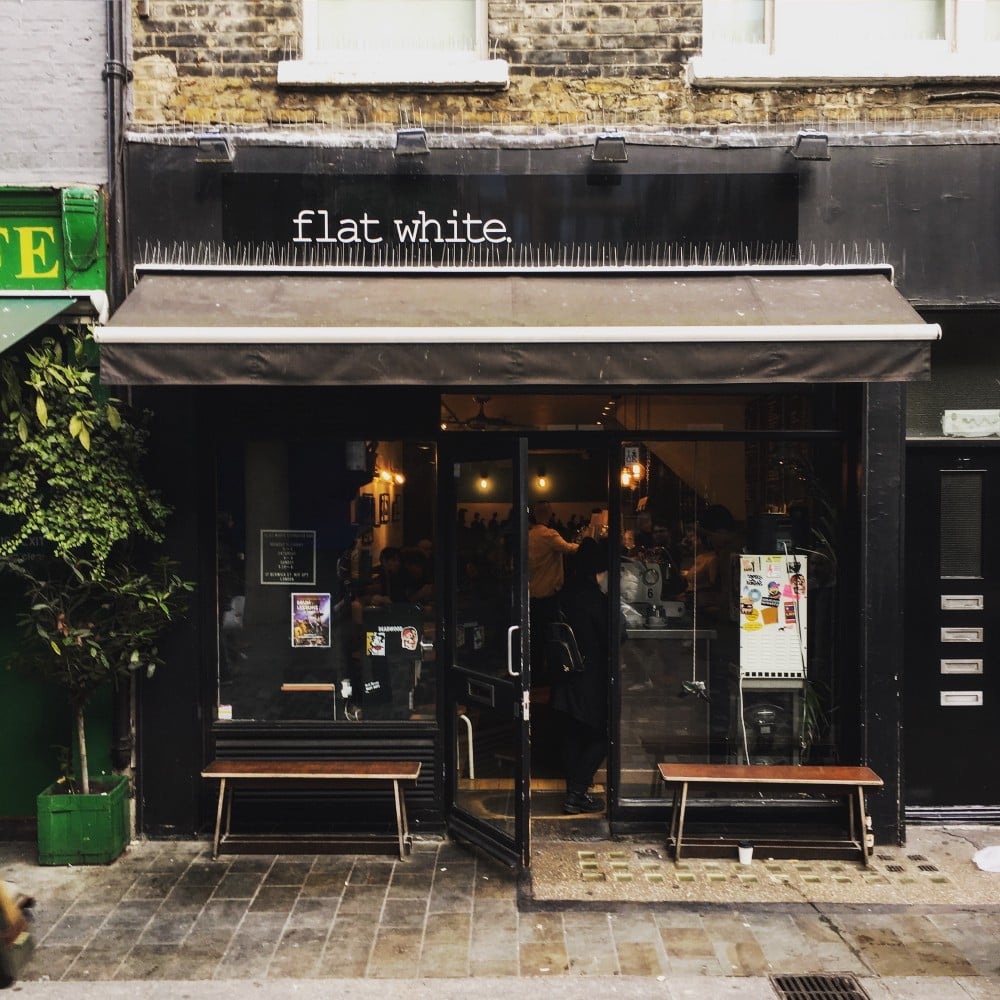
Distinctive Local Heroes
We’ve showed the workings behind this analysis because we want to empower coffee entrepreneurs to succeed and for the coffee community to become even more vibrant. Thousands of small, independent coffee businesses may be the most viable structure for the specialty coffee industry and the best foundation for a sustainable future. There are many social and environmental issues extending from crop to cup. Commercially viable coffee shops is an essential starting point.
Some coffee entrepreneurs may not like or agree with our assertion. But it’s then incumbent upon them to offer a vision of a better world for coffee drinkers, employees and coffee farmers – as well as themselves. Most currently fail at this assignment. Additionally, any plans should be firmly grounded in reality. That means understanding the world as it is as well as having a vision of how it might operate. A sound understanding of the specialty coffee industry demands a perspective that both make sense of the past and provides insight into our future.
The specialty shops that have succeeded to date are those that combine an attractive proposition with a viable niche of consumers. These shops are often distinctive and locally focused. This store format has long been the heart of the coffee industry and – assuming ongoing evolution apace with consumer preferences – these businesses are also likely to be its future too.
While the challenges identified in this series are likely to keep coffee entrepreneurs and investors up at night, for the majority of the specialty coffee community it remains business as usual. Propositions and formats will continue to evolve as consumer preferences change. Plus, ongoing technological development and changes in the regulatory environment will continue to demand their revision. With an industry of many small companies, ideas can be rapidly tested at low cost. Plus the resultant competition guards against complacency and being caught on the wrong side of consumer trends.
The huge diversity of coffee shops makes this a great time to be a coffee drinker, and this is likely to continue for the foreseeable future. The industry has evolved dramatically over the past decade and the next decade is likely to witness even more change. If small coffee businesses are going to be the future of coffee retail, then the industry should adjust several practices.
Firstly, we should tell more stories about the businesses that are actually succeeding rather than giving the chains free publicity when they announce their aspirations. Let’s reward the doers, not the talkers. If we want the coffee community to succeed, become more viable and support sustainable development objectives, then let’s bolster what’s already working and encourage consumers to find coffee shops that best suit their needs. And it’s worth remembering that most innovative concepts start in this segment and that there are now more independent specialty coffee shops than there are Starbucks outlets. By almost any measure, specialty coffee is an amazing success story.
Secondly, wholesale suppliers need to continue their work to support small business. While independent coffee shops have many strengths, they don’t always have the internal capacity to proactively manage aspects of their business such as equipment servicing and maintenance. A more sustainable future requires the development of services that support small business by enabling them to further outsource these types of tasks.
Our closing challenge is to industry bodies, who should better support all coffee businesses and not just the larger operators. After all, in specialty, smaller operators make up the majority of business, cumulatively sell the majority of cups and employ more baristas. It’s both unfortunate and a poor reflection that the Specialty Coffee Association (SCA) has fewer than 8,000 members globally. This makes it difficult to both reflect the industry’s priorities and represent its interests.
Similar consideration needs to take place at trade shows and competitions. The barriers to participation favour the minority of larger businesses. This distorts both participation and our perception of the industry. Better organisations, events and competitions would more accurately reflect the community and industry as it is. And, in turn, better our collective future.
These changes would be acts of enlightened self-interest and are not difficult. To get inspiration, it’s not necessary to look far outside the industry bubble. In fact, it’s only necessary to walk the high street. There you’ll see people frequenting coffee establishments, socialising and drinking the world’s greatest beverage. The success of the entire industry hinges on our ongoing ability to enhance coffee drinkers’ quality of life. So, particularly look out for the businesses where customers are enjoying themselves. These are the companies shaping our future. More likely than not, these businesses are independents.
And because of them, specialty coffee is succeeding.
